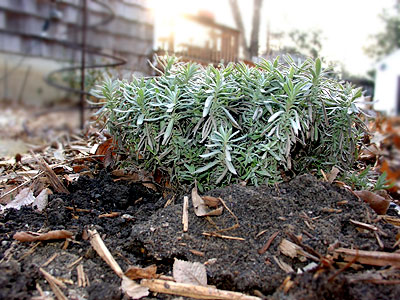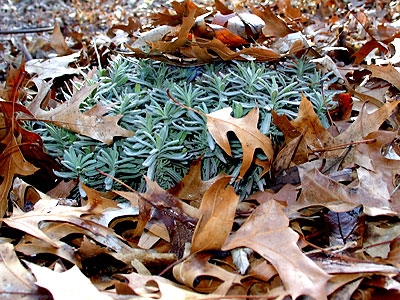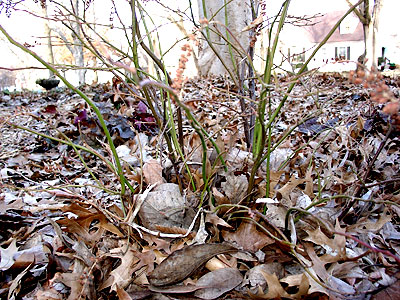 |
Frost Heaving |
|||||||||||||
Get Our Free Newsletter
|
Frost heaving occurs when garden soil expands and contracts through the
process of freezing and thawing. This is very common in the Kansas
City area as we often experience wide temperature swings throughout the
winter. Frost heaving is evident in the photo below (note the
cracked soil surface in the foreground). If this continues the plant
roots will eventually become directly exposed to the freezing
temperatures. We want to avoid this.
If heaving is evident in your garden simply press the soil back in place and cover the area with a thick layer of leaves (see below) or other mulching material. Leaves are especially effective as they trap a lot of insulating air and allow the soil to breathe.
Remember, the purpose of the mulching is to prevent cycles of freezing and thawing. It is expected at this time of year that soils will be frozen. Mulching simply keeps the soil frozen in order to prevent the heaving associated with freeze/thaw cycles.
|
|||||||||||||
|
© 1999 - 2010 Savvygardener.com, Inc. All rights reserved. If you wish to copy, transmit, or otherwise duplicate any of the material from our website please ask us first. Thank you. |
||||||||||||||


